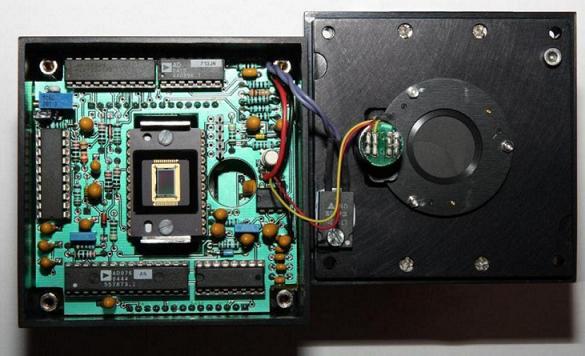
| CCD type | Full frame Front-side illuminated with transparent gate Two phase transfer Micro-lens technology |
| Number of pixels | 512 x 768 (3:2 aspect ratio) |
| Size | 4.6 x 6.9 mm |
| Pixel size | 9 microns |
| Filling ratio | 100% |
| Quantum efficiency | 77% peak, 44% @400nm |
| Capacity | 100 000 electrons |
| Digitization | 15 bits (from 0 to 32767) |
| Gain | 4.35 electrons / ADU |
| Read-out noise | ~24 electrons rms |
| Offset | 2700 ADU |
| Computer interface | Printer port (LPT1) |
| Frame read-out time | 13 seconds (it would be possible to improve with an Ethernaude) |
| Shutter | Pentax 18mm |
| Cooling | 1 Peltier stage, no temperature stabilization |
| Cooling option | Drain (in aluminium) is not insulated |
| Power supply | Computer power supply 5V/12V for Peltier element + temperature sensor LM311+ fan + shutter +/-15V stabilized power supply for all CCD circuits |
| Sealing of mechanical housing | Tape + acrylic mastic |
| Solution against water vapor and freezing | foam / sponge parts to absorb humidity + remove air volume |